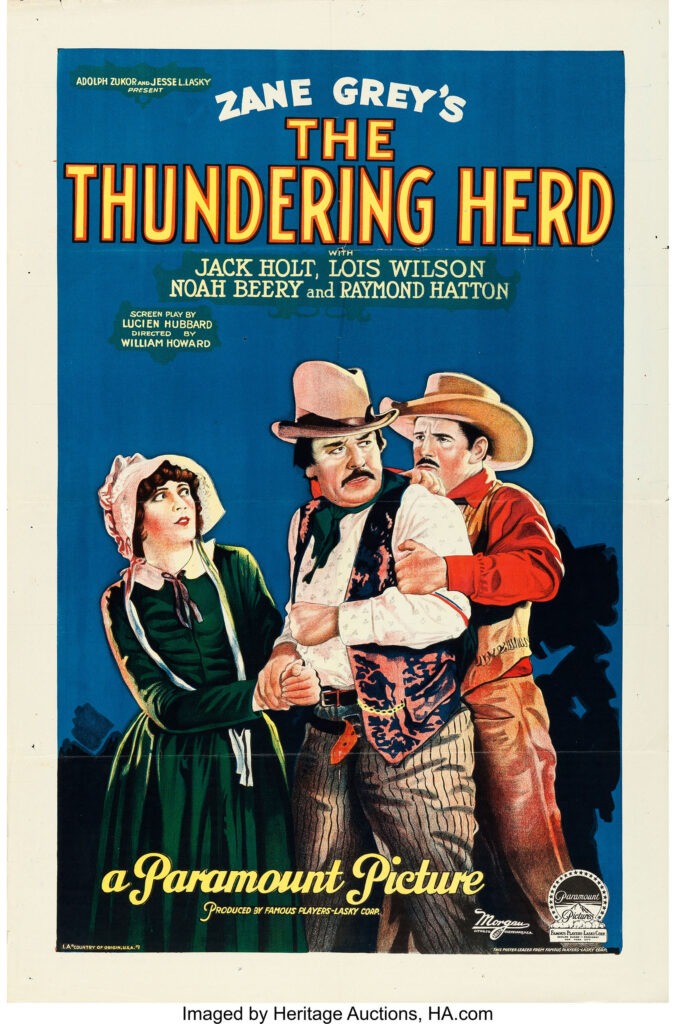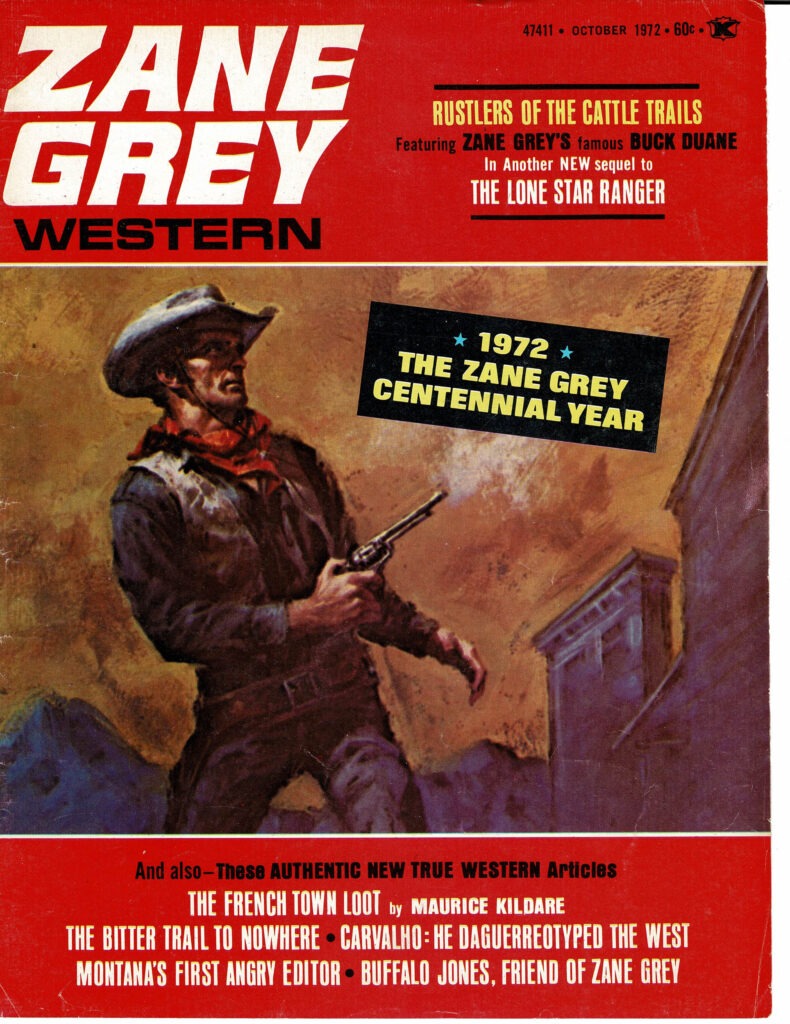So you want to read Zane Grey and don’t know where to start?
This little booklet grew out of a sense of need triggered by a number of practical situations. Almost every time I addressed a group about Zane Grey, I was accosted afterwards by the same statement and question, “He wrote so many books, where do I start in reading him?” Noting the variety of people asking the question and recognizing their different interests, I decided that there should be a short, simple, practical guide that would acquaint them with the wide variety of subject matter in Grey’s books, and provide them with some helpful hints in choosing and reading them.
There was a second question that was frequently asked: “Which ones do you like best?” To address this question, I have combined a brief description of the contents of the books with my list of favorites. It must be emphasized that the rating of the books has little to do with their literary worth – I will leave such rankings to English professors and literary critics; I am neither. What are the bases of these ratings? I wish there were space to carefully note the reasons for my likes and dislikes – and there are some of both in each of Grey’s books. Mainly in these ratings my heart dominates my head. Memories connected with first readings have played an important role, as have the difficulties and rewards of tracking down the locale of a story. And after over fifty years of reading Grey, there are characters, both major and minor, who for some inexplicable reasons have become closer friends than their compatriots. But the mind does play a part, for the books that grapple most deeply with the meaning of life, the problems of faith, suffering, and Ultimate Reality do tend to rate high on the list. Finally, there are unforgettable pictures. I have watched few Zane Grey movies, for I prefer my own mental pictures based upon repeated readings and visits to the sites; and many, many times I have replayed breathtaking clips of unforgettably episodes in nearly every one of his books – like the rolling of the stone in Riders of the Purple Sage, the unlikely band of fugitive friends asleep under the great Rainbow Bridge, and Jim Wall’s and Helen Herrick’s night on the banks of the flooding tributary of the Dirty Devil River in Robbers’ Roost.
I have tried to include materials which will make possible different approaches to Grey’s works. There is a centerfold map to facilitate reading books geographically. The numbers on the alphabetized list of romances correspond with the numbers on the map; the dates in brackets are the dates of writing and make possible a chronological reading. The unenclosed date is that of publication if you choose to read the books in the order in which they were published. When Grey died in 1939 (1872-1939), Harper had such a backlog of books that it was about twenty years before they were all published; so sometimes the two dates are far apart. “PR,” followed by a number, is my personal rating of the book. To make it easier to read Grey topically, various subjects have been noted; the books in each group are arranged in the order of their importance. All the sequels have been grouped together to make it possible to read them in their proper sequence. There are other matters that ought to be taken into consideration. Remember that these books were written between 1903 and 1939, and literary fashions have changed drastically. Remember, also, that Grey was concerned with more than spinning a good yarn. He was interested in geography, nature, and history; and he felt that knowledge of these could add substantially to the quality of his readers’ lives. While he visited the areas about which he wrote, took careful notes, and engaged in extensive research, do not expect slavish attention to detail. Grey specifically claimed to be writing historical romances – not historical novels. The novel fulfills its function when it is true to the facts of history; the romance strives to be true to the spirit of history. Do not judge Grey on his use of facts but on how well he caught the spirit of the West. Finally, Grey believed every author should have a viable philosophy of life convincingly presented in his writings; read for these values as well as for the story.
Who was Zane Grey?
Zane Grey was born in Zanesville, Ohio, in 1872, the great-grandson of Colonel Ebenezer Zane, the founder of Wheeling, West Virginia. He was an indifferent student but an avid reader, an outdoorsman, and a semi-professional baseball player. He attended the University of Pennsylvania on a baseball scholarship, earned a degree in dentistry, and later opened a dental office in New York.
In 1907 he met Buffalo Jones, who invited him to go to Arizona and help rope mountain lions to sell to zoos. Grey went and fell under the spell of the West.
On and off for the next thirty years, Grey hired the best guides available and camped throughout the West, compiling the descriptions and stories that became the trademarks of his writings. Few people of his day had as wide and detailed knowledge of the land west of the Missouri River as did Grey. His books involve every state west of the Missouri River except North Dakota. He died in 1939 of a heart attack.
Grey’s first book, Betty Zane, was published at his own expense in 1903. But beginning in 1908 and continuing for the next half century, with the exceptions of 1954 and 1962, he had one to four books published each year. From 1915 to 1924 there was a Zane Grey in the top ten every year but two; and at one time in the United States he ranked only behind the Bible and McGuffey’s Readers in sales. Ann Ronald speculates that his total audience through magazine serials, books, and movies is well over 250 million. Most of his books are still in print. He has been translated into over twenty different languages. At latest count, over one hundred and thirty movies have been made of his books. Dr. Wheeler, in his dissertation of 1975 wrote that: “Total sales in the U. S. presently hover around the 50,000,000 mark with another probable 50,000,000 in foreign editions,…” [p5].
There has never been anyone like him in the history of the literature of the U. S.

by Charles G. Pfeiffer, Director, Zane Grey’s West Society
Associated Content for How to get Started:

If You Would Like to Know More…
- Farley, G. M., Zane Grey: A Documented Portrait. (A Portals Book, 1986, 128pp).
- Gruber, Frank, Zane Grey. (World Pub. Co. 1970, 284pp).
- Jackson, Carlton, Zane Grey. (Twayne Publishers, Inc., 1973, Rev. 1989, 173pp).
- Kant, Candace C., Zane Grey’s Arizona. (Northland Press, 1984, 184pp).
- Kimball, Arthur G., Ace of Hearts: The Westerns of Zane Grey. (Texas Christian Uni. Press, 1993, 278pp).
- May, Stephen J.
- – Zane Grey: Romancing the West. (Ohio Uni. Press, 1997, 180pp).
- – Maverick Heart: The Further Adventures of Zane Grey. (Ohio Uni. Press, 2000, 267pp).
- Pauly, Thomas H. Zane Grey: His Life, His Adventures, His Women (Uni. of Illinois Press, 2005, 385pp).
- Pfeiffer, Charles G.
- – DVDs: A Long Grey Trail A `Windin’; The Shores of Gitchee Gumee; The UP Trail, Tonto Tales, Tales of the Northwest
- – Footnotes to Grey’s Maverick Queen. (2000, 46pp).
- – Searching For Locales Of Grey’s Southwestern Romances (A Personal Journey 2003, 41pp)
- – The Surprise Valleys of Zane Grey. (Rev., 2001, 26 pp).
- – The Unpardonable Stephen Latch. (1994, 15pp).
- – Zane Grey: A Study in Values – Above and Beyond the West. (Zane Grey’s West Society, (2005, 626pp).
- – Zane Grey’s Texas Novels: What? Where? How to Get There. (Rev. 1993, (44pp)
- Scott, Kenneth W., Zane Grey: Born to the West.(G. K. Hall &Co., 1979, 179pp).
- Wheeler, Joseph L., Zane Grey’s Impact on American Life andLetters: A Study of the Popular Novel. (George Peabody College for Teachers, 1975, 406pp. An unpublished doctoral dissertation).